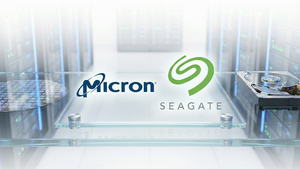- P-300N: Advanced Silicon Battery Achieved Over 90% Capacity Retention at 300 Cycles in Full Cell
- Surpasses Targeted Performance of 80% Retention at 300 Cycles
- One of Most Stable, Low-Cost Materials in Global Battery Supply Chain
- Dr. J.S. Jeoung Commits Full-Time as Senior Vice President of Commercialization & Cell Development
- Previous Experience in Achieving Commercial-Standard Performance for Silicon Battery
- Initiated Battery Cell Design for P-300N Long-Term Performance Testing in Large-Scale Battery Formats
- Secured & Installing Expansion Equipment to Fulfill Elevated P-300N Sample Requests from Global Downstream Partners
TORONTO, June 05, 2025 (GLOBE NEWSWIRE) -- NEO Battery Materials Ltd. (“NEO” or the “Company”) (TSXV: NBM) (OTC: NBMFF), a low-cost silicon anode materials developer that enables longer-running, rapid-charging lithium-ion batteries, is pleased to announce (i) the Company’s advanced silicon battery, P-300N, has outperformed target metrics for long-term capacity testing, (ii) Dr. Jun Sik Jeoung’s full-time hiring as Senior Vice President to prepare large-scale battery testing and production expansion, and (iii) the voting results of the 2025 Annual General and Special Meeting.
P-300N: Outperformance in Long-Term Battery Capacity Testing
NEO surpassed performance objectives for long-term capacity stability testing with its advanced silicon battery prototype, P-300N, introduced in March 2025. The P-300N High-Stability Variant exhibited over 90% capacity retention for 300 cycles1 in the coin full cell2 format, exceeding the target set at 80% retention given the same cycle frequency. Within the global supply chain, the results establish P-300N as one of the most stable silicon battery materials utilizing metallurgical silicon3 (MG-Si) – the lowest-cost silicon input available for battery-grade applications.
In recognition of the potential demonstrated by NEO and to lead scaling efforts, Dr. J.S. Jeoung has committed to a full-time position as Senior Vice President of Commercialization & Cell Development. With over 17 years of battery expertise from Samsung SDI and leading automotive companies, Dr. Jeoung has previously optimized silicon battery materials to achieve commercial-standard performance of 1,000 cycles at 80% capacity retention in large-scale battery cells.
Positive P-300N results now allow NEO to proceed toward large-cell format testing. Dr. Jeoung and the engineering team have initiated the battery cell design and architecture of single-layer pouch cells4. Single-layer pouch cells will involve long-term battery performance tests of 500+ cycles to optimize interactions between P-300N, graphite anodes, and various cathode materials.
To prepare concurrently for near-commercial, multi-layer5 cell testing, the Company is in active discussions with battery prototypers and global manufacturers in South Korea, the U.S., and Germany. Multi-layer cell manufacturing will be outsourced due to the need for specialized equipment. Additionally, Mr. Ricky Lee, a 35-year battery industry veteran and Lead Managerial Advisor, will cooperate with Dr. Jeoung to facilitate NEO’s large-scale testing and commercialization strategy for downstream qualifications.
To fulfill the elevated requests from global downstream partners, the Company has secured all post-treatment equipment, and installation is nearing completion at the R&D Scale-Up Centre. Streamlined production parameters and performance milestones have further led to the decision of adding a key manufacturing unit to expand overall capacity. This high-specification machinery will enhance quality levels due to higher precision control and efficient MG-Si processing.
2025 Annual General and Special Meeting Results
The Company is pleased to provide the voting results of the Company’s Annual General and Special Meeting held on June 4, 2025. All resolutions furnished in the Management Information Circular dated April 22, 2025, were carried and duly authorized and approved by shareholders.
Out of the outstanding voting securities of 119,157,756 as of the record date of April 15, 2025, the securities represented by management proxies and the total securities represented at the Meeting were 10,971,844 or 9.21%, representing a quorum.
| Motion | Yes | Yes % | Votes No | No % | Abstain | Abstain % |
| Appoint MNP LLP as Auditor | 10,870,419 | 99.076% | 0 | 0% | 101,425 | 0.924% |
| Set Number of Directors at 5 | 10,906,506 | 99.404% | 65,338 | 0.596% | 0 | 0% |
| Elect Spencer Huh as Director | 10,866,858 | 99.043% | 0 | 0% | 104,986 | 0.957% |
| Elect Seok Hyung Lee as Director | 10,921,516 | 99.541% | 0 | 0% | 50,328 | 0.459% |
| Elect Dongmok Whang as Director | 10,925,616 | 99.579% | 0 | 0% | 46,228 | 0.421% |
| Elect Larry Okada as Director | 10,885,616 | 99.076% | 0 | 0% | 101,425 | 0.924% |
| Approve New Omnibus Equity Incentive Plan | 10,771,191 | 98.171% | 200,653 | 1.829% | 0 | 0% |
The details of the voting results are included in the report of voting results and will be available on the Company’s website and on SEDAR+ at www.sedarplus.ca.
1Cycle or Charging Cycle: One complete sequence of charging a battery to its full capacity and discharging it back to a specified lower limit that is typically set at 0%. Cycle tests are essential to measure battery lifespan and performance degradation over time. Using general conditions, 300, 500, and 1,000 charging cycles require 30, 45, and 90 days of testing, respectively.
2Coin Full Cell: Lithium-ion battery comprises all four core materials (cathode, anode, separator, and electrolyte). Generally, battery anode materials proof-of-concept and optimization are completed with half cells. Only the anode, separator, and electrolyte are used with a lithium-metal counter electrode that may supply infinite lithium ions. Full cells have a limited number of lithium-ions, given that commercial-level cathode materials retain a limited supply of lithium ions compared to lithium-metal. The coin cell format is the most widely used cell for proof-of-concept and material validation. Coin cell validation is a necessary barrier before entry into large cell formats.
3Metallurgical Silicon (MG-Si): MG-Si is the lowest cost silicon input available for battery-grade applications, costing approximately half of graphite based on weight. MG-Si is deemed as the only viable input material to reduce silicon anode manufacturing prices compared to alternative inputs often utilized by competitors such as silane gas or silicon nanoparticles, which are significantly more expensive.
4Single-Layer/5Multi-Layer Pouch Cell: Along with cylindrical and prismatic cells, the pouch cell is one of the three main battery cell formats manufactured commercially. In the full cell setting, a single-layer pouch cell involves one layer of the cathode material and one layer of the anode material. Multi-layer pouch cells involves the integration of more than one layer of each cathode and anode material. Given that the materials are not changed, the battery capacity increases with every additional layer.
About NEO Battery Materials Ltd.
NEO Battery Materials is a Canadian battery materials technology company focused on developing silicon anode materials for lithium-ion batteries in electric vehicles, electronics, and energy storage systems. With a patent-protected, low-cost manufacturing process, NEO Battery enables longer-running and ultra-fast charging batteries compared to existing state-of-the-art technologies. The Company aims to be a globally-leading producer of silicon anode materials for the electric vehicle and energy storage industries. For more information, please visit the Company’s website at: https://www.neobatterymaterials.com/.
On Behalf of the Board of Directors
Spencer Huh
Director, President, and CEO
For Investor Relations, PR & More Information:
info@neobatterymaterials.com
T: +1 (437) 451-7678
This news release includes certain forward-looking statements as well as management's objectives, strategies, beliefs and intentions. All information contained herein that is not clearly historical in nature may constitute forward-looking information. Generally, such forward-looking information can be identified notably by the use of forward-looking terminology such as "plans", "expects" or "does not expect", "is expected", "budget", "scheduled", "estimates", "forecasts", "intends", "anticipates" or "does not anticipate", or "believes", or variations of such words and phrases or state that certain actions, events or results "may", "could", "would", "might" or "will be taken", "occur" or "be achieved". Forward-looking information is subject to known and unknown risks, uncertainties and other factors that may cause the actual results, level of activity, performance or achievements of the Company to be materially different from those expressed or implied by such forward-looking information, including but not limited to: volatile stock prices; the general global markets and economic conditions; the possibility of write-downs and impairments; the risk associated with the research and development of advanced and battery-related technologies; the risk associated with the effectiveness and feasibility of technologies that have not yet been tested or proven on commercial scale; manufacturing process scale-up risks, including maintaining consistent material quality, production yields, and process reproducibility at a commercial scale; compatibility issues with existing battery chemistries and unforeseen the risks associated with entering into and maintaining collaborations, joint ventures, or partnerships with battery cell manufacturers, original equipment manufacturers, and various companies in the global battery supply chain; the risks associated with the construction, completion, and financing of commercial facilities including the Windsor and South Korean facilities; the risks associated with supply chain disruptions or cost fluctuations in raw materials, processing chemicals, and additive prices, impacting production costs and commercial viability; the risks associated with uninsurable risks arising during the course of research, development and production; competition faced by the Company in securing experienced personnel and financing; access to adequate infrastructure and resources to support battery materials research and development activities; the risks associated with changes in the technology regulatory regime governing the Company; the risks associated with the timely execution of the Company’s strategies and business plans; the risks associated with the lithium-ion battery industry’s demand and adoption of the Company’s silicon anode technology; market adoption and integration challenges, including the difficulty of incorporating silicon anodes within battery manufacturers and OEMs systems; the risks associated with the various environmental and political regulations the Company is subject to; risks related to regulatory and permitting delays; the reliance on key personnel; liquidity risks; the risk of litigation; risk management; and other risk factors as identified in the Company’s recent Financial Statements and MD&A and in recent securities filings for the Company which are available on www.sedarplus.ca. Forward-looking information is based on assumptions management believes to be reasonable at the time such statements are made, including but not limited to, continued R&D and commercialization activities, no material adverse change in precursor prices, development and commercialization plans to proceed in accordance with plans and such plans to achieve their stated expected outcomes, receipt of required regulatory approvals, and such other assumptions and factors as set out herein. Although the Company has attempted to identify important factors that could cause actual results to differ materially from those contained in the forward-looking information, there may be other factors that cause results not to be as anticipated, estimated or intended. There can be no assurance that such forward-looking information will prove to be accurate, as actual results and future events could differ materially from those anticipated in such forward-looking information. Such forward-looking information has been provided for the purpose of assisting investors in understanding the Company's business, operations, research and development, and commercialization plans and may not be appropriate for other purposes. Accordingly, readers should not place undue reliance on forward-looking information. Forward-looking information is made as of the date of this presentation, and the Company does not undertake to update such forward-looking information except in accordance with applicable securities laws.
Neither TSX Venture Exchange nor its Regulation Services Provider (as that term is defined in the policies of theTSX Venture Exchange) accepts responsibility for the adequacy or accuracy of this release.








